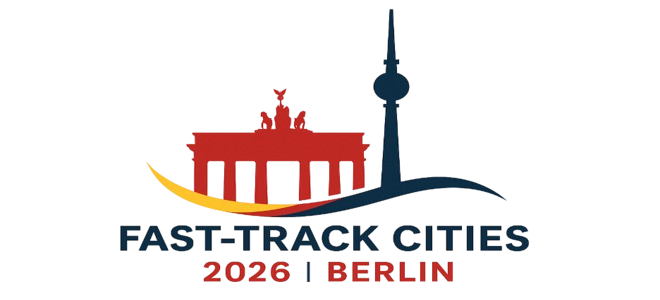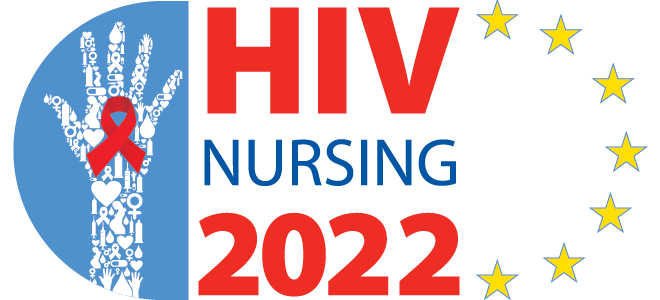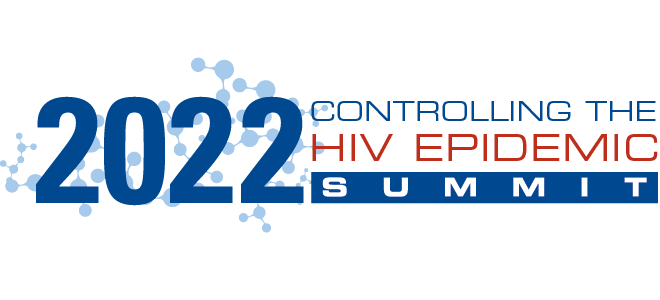
SUMMIT REPORT
The US Fast‑Track Cities 2025 Summit, held in September 15-17, 2025, in New Orleans, convened more than 76 cities and counties from across the country, including Fast-Track Cities, Ending the HIV Epidemic (EHE) jurisdictions, and joint Fast-Track City-EHE jurisdictions. The Summit represented a reaffirmation of collective will in the face of mounting challenges. Public health officials, city and county policymakers, clinicians and service providers, and community leaders came together to reflect on progress, examine persistent barriers, and chart an urgent course forward.
Organized by IAPAC and the Fast-Track Cities Institute, in partnership with NASTAD, NACHO, NMAC, and AIDS United, the Summit carried a tone of cautious optimism. On the one hand, considerable progress has been made – new diagnoses are declining in several jurisdictions, and linkage-to-care metrics are improving. Yet the gaps remain glaring: disparities persist across race, geography, gender identity, and income. The Summit underscored that without bold adaptation and focused support, gains will remain fragile.
Notably, the successes are part of the Fast-Track Cities initiative, whose first US member-city (Atlanta) joined the network in 2015, and the federal EHE initiative since 2019, which leveraged existing Fast-Track Cities infrastructure in many cities and counties to implement interventions aimed at reducing new HIV infections by 90% by 2030. Yet, as Summit participants noted, the EHE initiative itself faces threats from shifting federal policy priorities and ongoing budgetary uncertainty, placing fragile gains at risk.
Above all, the Summit reinforced the need to listen – truly listen – to the cities and counties at the forefront of the US HIV response. As the Safeguarding HIV Care Under the OBBBA IAPAC HIV Policy Brief released on the Summit’s first day emphasized, city and county implementation plans must be living organisms – flexible, resilient, and responsive to shifting contexts such as the One Big Beautiful Bill Act (OBBBA) Medicaid work requirements.
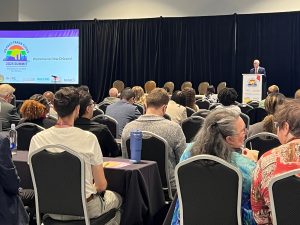

The Ambition, the Disquiet, the Charge
From the outset, the Summit set a tone that was neither congratulatory nor complacent. Instead, it emphasized clarity of purpose: this was a convening to listen, to learn, and to act with urgency. The ambition was clear – to recommit to achieving the 2030 targets for ending the HIV epidemic in the United States – but equally clear was the disquiet that progress is not guaranteed and HIV service disruptions are occurring nationwide, notably affecting highly marginalized and vulnerable communities, including transgender and undocumented individuals, in the initial phases of disruptions precipitated by federal policy shifts.
The release of the IAPAC HIV Policy Brief at the Summit framed this conversation. It laid out the structural risks posed by shifting federal policies, including Medicaid work requirements under OBBBA, which threaten continuity of coverage for vulnerable populations. The policy brief also warned that the EHE initiative itself, while a vital national framework, faces serious threats from policy shifts and potential budget cuts that could erode the infrastructure needed to sustain its momentum. Moreover, the policy brief called for resilient systems that can withstand external shocks, whether pandemics, disasters, or funding disruptions. This framing resonated across sessions, repeatedly cited as a guidepost for how cities must reopen their Fast‑Track City implementation plans.
Local leaders underscored how such changes directly imperil the EHE initiative. If Medicaid coverage erodes, the very populations EHE was designed to reach could lose access to care, undermining the initiative’s trajectory and the ability to support attainment of both EHE and Fast-Track Cities goals, objectives, and targets. Thus, the charge to the Summit was articulated succinctly: to recommit with urgency, clarity, and solidarity. Every plenary session and panel discussion was oriented toward this shared mandate.
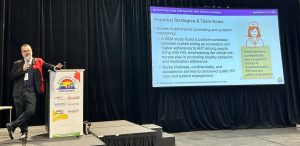
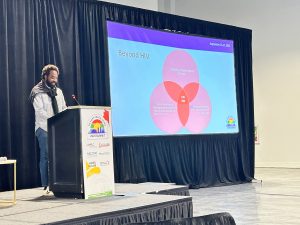
Anchoring Voices and Presentations
The true measure of the Summit was not only in the policies debated or the data presented, but in the stories and expertise shared by those closest to the work of ending the HIV epidemic. Each presentation carried both evidence and urgency, underscoring the stakes for cities and counties navigating shifting realities. The Summit’s richness came through in the voices of presenters who anchored its major themes, including:
- Sindhu Ravishankar, Vice President of Global Health Strategy at the Fast-Track Cities Institute, challenged the notion of uniform models in HIV implementation – demonstrating through incidence and prevalence ratio (IPR) data how contextual tailoring across diverse cities and counties yields differential gains in service uptake and epidemic control. She showed that in jurisdictions adopting localized strategies, IPRs fell meaningfully. (Sindhu Ravishankar, US FTC 2025 Summit)
- Dr. Patrick Sullivan, Professor of Epidemiology at Emory University, said that if cities and counties are serious about reaching EHE benchmarks, they must use data not as a retrospective mirror but as a forward-facing compass. That means pushing for data systems that are current, disaggregated, spatially sensitive, and embedded in adaptive decision-making – so that gains at the national level do not mask local gaps or stagnation. (Dr. Patrick Sullivan, US FTC 2025 Summit)
- Carl Baloney, Jr., President & CEO of AIDS United, argued that HIV advocacy must lean into data-driven return on investment (ROI) messaging – showing how every dollar invested in prevention or treatment yields multiple dollars saved in medical and societal costs. He underscored that framing ROI alone is insufficient; combining data with lived experience strengthens credibility, connecting numbers to real human lives. (Carl Baloney, Jr., US FTC 2025 Summit)
- Leisha McKinley-Beach, CEO of the Black Public Health Academy, argued for a community-anchored, person-centered HIV prevention approach, especially in regions where new HIV diagnoses remain disproportionately high, yet PrEP access is low. She emphasized that closing gaps requires alignment of social and political determinants, as well as increased investment in Black-led, community organizations to co-design local programs. (Leisha McKinley-Beach, US FTC 2025 Summit
- Dr. Sonya Hughes, Assistant Director in the Ryan White Grants Management Division of Dallas County Health and Human Services, described community-based participatory frameworks that rebuilt trust in marginalized neighborhoods – especially where earlier public health efforts had faltered. Her narrative reminded us that trust is not a given, but must be earned, preserved, and vigilantly protected through collaboration, inclusion, and accountability. (Dr. Sonya Hughes, US FTC 2025 Summit)
- Vatsana Chantala, Director of Ryan White Services and Resources at the New Orleans Health Department, presented a data-forward narrative by mapping youth engagement gaps across geographic zones where HIV services exist but access remains uneven. He used cohort forecasts and spatial modeling to provoke tough questions about resource allocation, equity, and how local jurisdictions can better close these micro-gaps. (Vatsana Chantala, US FTC 2025 Summit)
- Bishop O.C. Allen III, CEO of the Vision Community Foundation in Atlanta, called upon faith leaders and congregations to transform compassion into concrete action – bridging gaps in care, dismantling stigma, and advocating health equity across communities disproportionately affected by HIV. He underscored the spiritual and civic duty of faith communities to stand with the most marginalized, ensuring that every person’s right to dignity, health, and wellbeing is realized.
- Amna Osman, Executive Director of Nashville CARES, wove in lived experiences of clients navigating insurance churn, fragmented systems, and stigma, reminding us that language and policy often render human struggle invisible. She urged Summit attendees to ground our decisions in basic needs like housing, food, and safety, and to co-create solutions with communities rather than imposing top-down models. (Amna Osman, US FTC 2025 Summit)
- Arianna Lint, CEO of Arianna’s Place in Fort Lauderdale, highlighted the Deep South Positive Coalition, a trans-led initiative that empowers trans and gender-diverse communities to design and lead the HIV response. She detailed stark challenges, including discrimination in healthcare, the gap between PrEP awareness and use, and structural barriers such as stigma, housing, and financial instability. (Arianna Lint, US FTC 2025 Summit)
- Cleo Manago, Chief Executive Officer of the Pride Center of Maryland in Baltimore, urged the Summit to reclaim the HIV narrative through cultural affirmation, critical consciousness, and justice. He challenged attendees to recognize that progress in health must be inseparable from dismantling racism, internalized oppression, and erasure – and that communities already contain the wisdom to lead transformative change. (Cleo Manago, US FTC 2025 Summit)
- Dr. MarkAlain Déry, Chief Innovation Officer and Medical Director at Access Health Louisiana in New Orleans, illustrated how municipal–academic collaborations can fuel rapid-cycle innovation in HIV prevention and retention. He presented case studies showing how aligning data systems, implementation teams, and policy levers enables jurisdictions to iterate quickly – turning evidence into action across practice, monitoring, and resource allocation. (Dr. MarkAlain Déry, US FTC 2025 Summit)
- Dr. Sarah Braunstein, Assistant Commissioner at the New York City Department of Health & Mental Hygiene’s Bureau of Hepatitis, HIV, and STIs, led a compelling discussion on applying a syndemic lens to HIV programming. She walked attendees through NYC’s cost modeling, integration strategies, and sustainability assessments, reinforcing that scaling services must be matched by fiscal realism, cross-program coordination, and efficiencies within a constrained budget. (Dr. Sarah Braunstein, US FTC 2025 Summit)
- Dr. Sarah Rowan, Director of HIV/STI Prevention and Control at Denver Health’s Public Health Institute, illustrated how integrating HIV care into broader health systems strengthens impact by leveraging existing clinical platforms and reducing fragmentation. She described how combining training, workforce development, and cross-sector coordination across primary care, behavioral health, and public health settings can expand reach, improve efficiency, and reinforce sustainability. (Dr. Sarah Rowan, US FTC 2025 Summit)
- Clover Barnes, Bureau Chief of the Care & Treatment Division, DC Department of Health, emphasized the importance of workforce innovation to sustain person-centered HIV care during times of pressure. She highlighted strategies to support peer navigators, community health workers, and front-line staff – through better training pipelines, sustainable funding structures, recognition and compensation, and efforts to minimize burnout and turnover. (Clover Barnes, US FTC 2025 Summit)
- Dr. Julia Fleming, an Infectious Disease Specialist at Fenway Health in Boston, presented her federally qualified clinic’s model for delivering integrated, person-centered, status-neutral care while maintaining a diverse and culturally competent workforce. She cited the importance of medical, behavioral health, dental, and supportive services under one roof, eliminating internal silos and enabling a “no wrong door” approach so that clients enter the system through a single pathway and are triaged to what they most need. (Dr. Julia Fleming, US FTC 2025 Summit).
- Anne Cronyn, Community Development Coordinator in Tampa’s Department of Housing and Community Development, outlined how Tampa leverages federal HOPWA funds alongside local resources to provide rental assistance, utility support, arrears payments, and wraparound services for people living with HIV. Cronyn stressed that without addressing housing insecurity head-on, efforts to achieve viral suppression and sustain engagement in care will remain incomplete. (Anne Cronyn, US FTC 2025 Summit)
- Marlene McNeese, Deputy Assistant Director of the Houston Department of Health, emphasized that Houston’s progress depends on meeting people where they are by leveraging community assets, engaging marginalized voices, and mobilizing quickly in response to policy and funding challenges. She reminded Summit participants that strategic planning must be flexible and rooted in real-time realities, with local stakeholders empowered to shape responsive and sustainable solutions. (Marlene McNeese, US FTC 2025 Summit)
- Dr. José M. Zuniga, President/CEO of IAPAC and the Fast-Track Cities Institute, summoned the urgency, stating the Summit was not ceremonial but instead a mobilization under the banner of the New Orleans Resolution in the Spirit of Resilience to End Urban HIV Epidemics. He urged that when cities and counties are calling, we must answer with clarity, speed, and collaboration to ensure that HIV responses remain laser-focused on the needs of all people living with and affected by HIV. (Dr. José M. Zuniga, US FTC 2025 Summit)
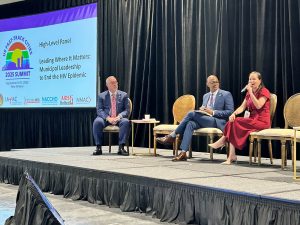
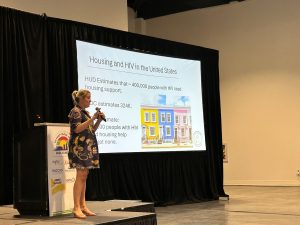
City and County Realities
The Summit devoted considerable time to hearing directly from cities and counties. Across topic areas, their testimonies painted a picture of both progress and strain. Local leaders described how innovative programs are gaining traction yet warned that systemic barriers – from workforce shortages to unstable funding – threaten to stall momentum. They also voiced concern that without tailored technical assistance and responsive policy frameworks, many jurisdictions risk widening inequities rather than closing them.
City and county health departments described how community-based organizations are stepping in to fill gaps – with outreach, peer linkage, and trust-building – but often without institutional support. Many asked for bridge funding, mentorship, or shared technical capacity to professionalize and scale these efforts. Their appeals underscored the fragility of relying on goodwill and under-resourced partners to perform critical functions that health systems should anchor. Community leaders attending the Summit warned that without intentional investment, promising grassroots innovations could collapse under the weight of expectations they are ill-equipped to sustain.
Peri-urban and suburban jurisdictions described how Fast‑Track Cities plans, originally designed with urban populations in mind, often fail to address emerging needs in peri urban and suburban communities. These areas reported persistent gaps in prevention access and care continuity. Officials noted that resources are disproportionately concentrated in city centers, leaving surrounding areas underserved despite rising incidence trends. They urged that future planning explicitly account for the geographic spread of the epidemic, rather than assuming “urban only” models will suffice.
Community-based organizations shared stories of stepping in to fill gaps in trust and access, yet often without stable funding or formal recognition. They called for structural support to professionalize and scale their critical contributions. Summit speakers highlighted that these organizations often function as the first and only point of contact for people navigating stigma, poverty, and unstable systems. Recognizing and resourcing them, participants argued, is not charity but a matter of public health necessity.
Across jurisdictions, anxiety over Medicaid reforms and proposed work requirements was widespread. Several leaders described how they cannot reliably plan when coverage could be stripped from the very people they aim to serve – undoing years of investment in linkage, retention, and prevention. Local leaders underscored how such changes directly imperil the EHE initiative. If Medicaid coverage erodes, the very populations EHE was designed to reach could lose access to care, undermining the initiative’s trajectory.
Most striking was the expressed desire for what Summit participants termed ‘sandbox support’ – flexible resources and technical guidance to test, adapt, and iterate local solutions without the burden of rigid compliance structures. Participants stressed that such support would allow them to innovate in real time, responding to shifting community needs without fear of punitive consequences if pilots failed. They also underscored that a sandbox approach fosters shared learning, where both successes and failures become valuable assets for other jurisdictions facing similar challenges.
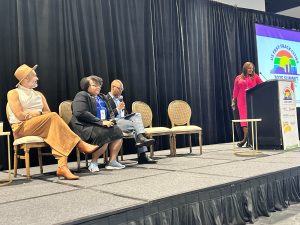
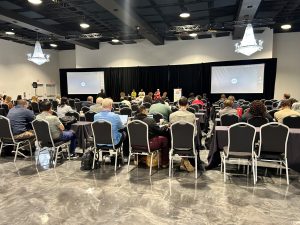
Emergent Themes
The Summit discussions in plenary sessions, panel discussions, and oral abstract presentations circled back to a set of recurring priorities. While each jurisdiction brought its own unique context, the commonalities were striking and revealed the contours of a shared national story. Six core themes emerged across the Summit:
- Momentum exists but remains fragile. Many cities recounted real progress: declines in new diagnoses, improved time-to-linkage, rising retention in care. Yet across presentations and local panels, there was acute awareness that gains are uneven – and vulnerable to reversal.
- Data disaggregation is imperative. Without detailed breakdowns, inequities remain invisible and unaddressed. From Vatsana Chantala’s mapping in New Orleans to Dr. Sarah Braunstein’s costing analyses in New York City, presenters underlined the danger of aggregated metrics. To close gaps, we must see them – by ZIP code, by race, by gender identity, by social vulnerability.
- Person‑centered, trust‑driven models succeed. Trust, participation, and co‑design are non‑negotiable for engagement. Across the Summit, the most compelling programs were those designed with communities – not for Dr. Sonya Hughes’ work in Dallas, Amna Osman’s stories from Nashville, and Marlene McNeese’s outreach efforts in Houston all illustrated how trust and responsiveness unlock engagement.
- Policy environments have both levers and risks. Medicaid reforms could undermine access and equity. The specter of Medicaid work requirements loomed large. Many jurisdictions reported that even rumors of reforms provoke client churn, confusion, and distrust. The Safeguarding HIV Care Under the OBBBA IAPAC HIV Policy Brief released on Day 1 reinforced that stability in care access must be defended. We heard repeatedly: policy is not peripheral – it is central.
- Sustainability requires innovation and partnership. Jurisdictions must blend funding, build academic alliances, and pursue efficiencies. In a time of budget constraints, presenters from cities from Chicago to San Antonio showed how municipal-academic partnerships, cost-sharing models, and internal efficiencies can protect core services. Still, many smaller jurisdictions will need external scaffolding to stay afloat.
- Resilience must be embedded. Systems must prepare for shocks, with redundancies and decentralized capabilities. Across multiple discussions, we confronted the reality that policy shocks, funding cuts, pandemics, and disasters will continue to test these systems. Resilient systems – redundant staffing, duplicate functions, flexible models, decentralized capacity – are not optional; they are essential.
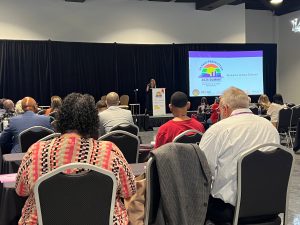
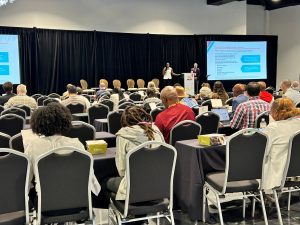
Strategic Directions Forward
The US Fast-Track Cities 2025 Summit narrative is not just a catalog of insights, but a call to action for local stakeholders in cities and counties. To stay ahead, to stay equitable, and to keep our commitments, the Fast-Track Cities initiative in the United States will double down going forward in three critical dimensions: listening, adapting, mobilizing (see Table 1). These pillars were not abstract concepts, but recurring requests voiced health officials and community leaders throughout the Summit. They capture the urgency of responding to immediate policy threats, such as Medicaid work requirements, and the long-term responsibility of sustaining the EHE initiative through innovation and resilience.
Listening will involve structured tours, diagnostic audits of implementation plans, and community roundtables that prioritize marginalized voices. Adapting means reopening and revising Fast‑Track City and EHE plans, tailoring technical assistance, and expanding peer learning cohorts. Mobilizing requires policy advocacy, especially against Medicaid work requirement risks, deployment of shared dashboards, seed funding for local innovation, and accountability mechanisms that keep momentum on track. These strategies together provide a roadmap for supporting cities and counties, including Fast-Track Cities and EHE jurisdictions, in the months and years ahead.
Table 1. Fast-Track Cities Listening, Adapting, and Mobilizing Framework
| ACTION | COMMITMENT |
| Listening with Purpose | Deploy listening tours with cities and counties to map their critical barriers, fears, and aspirations.
Co-develop implementation diagnostics, tools to help jurisdictions audit their HIV plans considering current realities, policy shifts, and resource constraints. Convene community voices roundtables – especially those underheard (rural, justice-involved, marginalized identity groups) – to ensure decisions are grounded in lived experience. |
| Adapting with Intention | Help cities and counties reopen their Fast-Track Cities and EHE plans: incorporating stress tests, alternate scenarios, policy contingencies (especially around Medicaid rules), and adaptive pivots.
Design technical assistance pathways – tiered, tailored, and agile – ranging from rapid-response consults to embedded multi-month partnerships. Scale peer learning cohorts (e.g., southern cities, jurisdictions facing Medicaid shifts, rural networks) to democratize innovation and cross-pollination. |
| Mobilizing with Urgency | Develop a policy support arsenal: briefs, legal templates, messaging packages focused especially on Medicaid work requirement mitigation strategies.
Create a shared data collective, enabling cities and counties to benchmark in near-real-time, detect micro-gaps, push corrective actions, and report accurate disaggregated data. Launch seed innovation grants to support “sandbox” pilots in under-resourced jurisdictions – strategic, limited, evaluative tests that can scale if successful. Maintain continuous communication and best practice-sharing, quarterly check-ins, progress syntheses, and public scorecards to promote accountability, visibility, and course correction. |
Conclusion
The US Fast‑Track Cities 2025 Summit reaffirmed the urgency of action, the centrality of equity, and the necessity of adaptive planning. As articulated in the New Orleans Resolution in the Spirit of Resilience to End Urban HIV Epidemics that bears New Orleans Mayor LaToya Cantrell’s signature, the Summit was catalytic. The charge now is to convert reflection into action, plans into movement, and commitments into measurable progress. The road to 2030 is narrowing. Together, we must act with speed, wisdom, and solidarity.
NOTE: This Summary Report was developed through support from ViiV Healthcare, the US Fast-Track Cities 2025 Summit’s Platinum sponsor. Other sponsors included Merck & Co., Elton John AIDS Foundation, and Housing Works.

